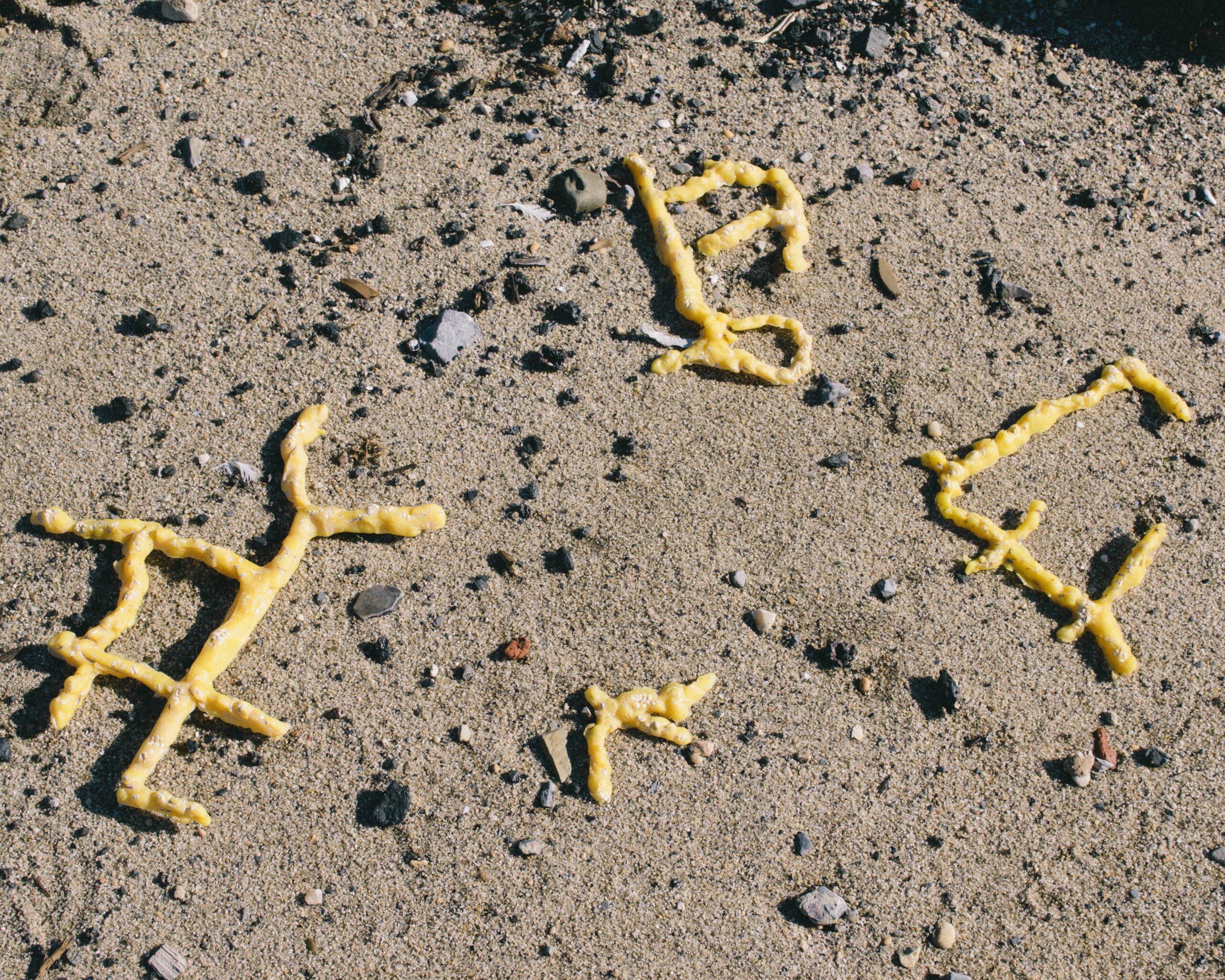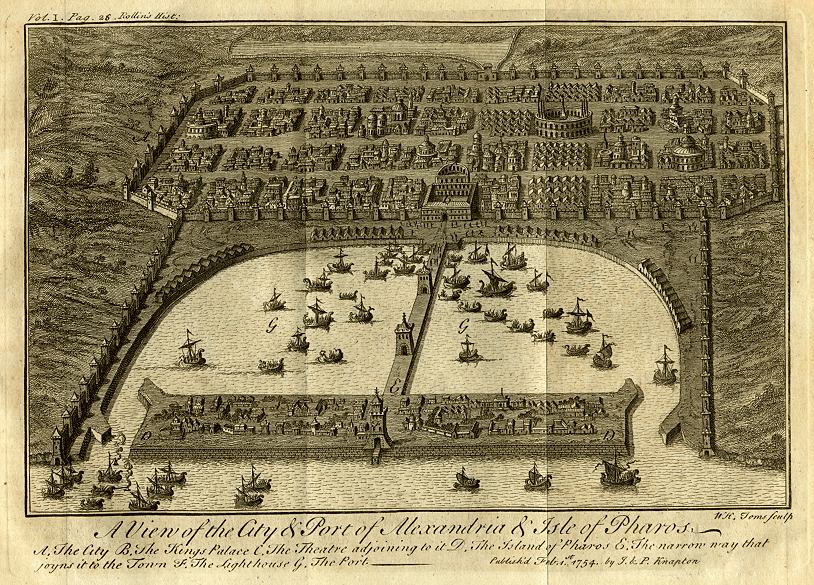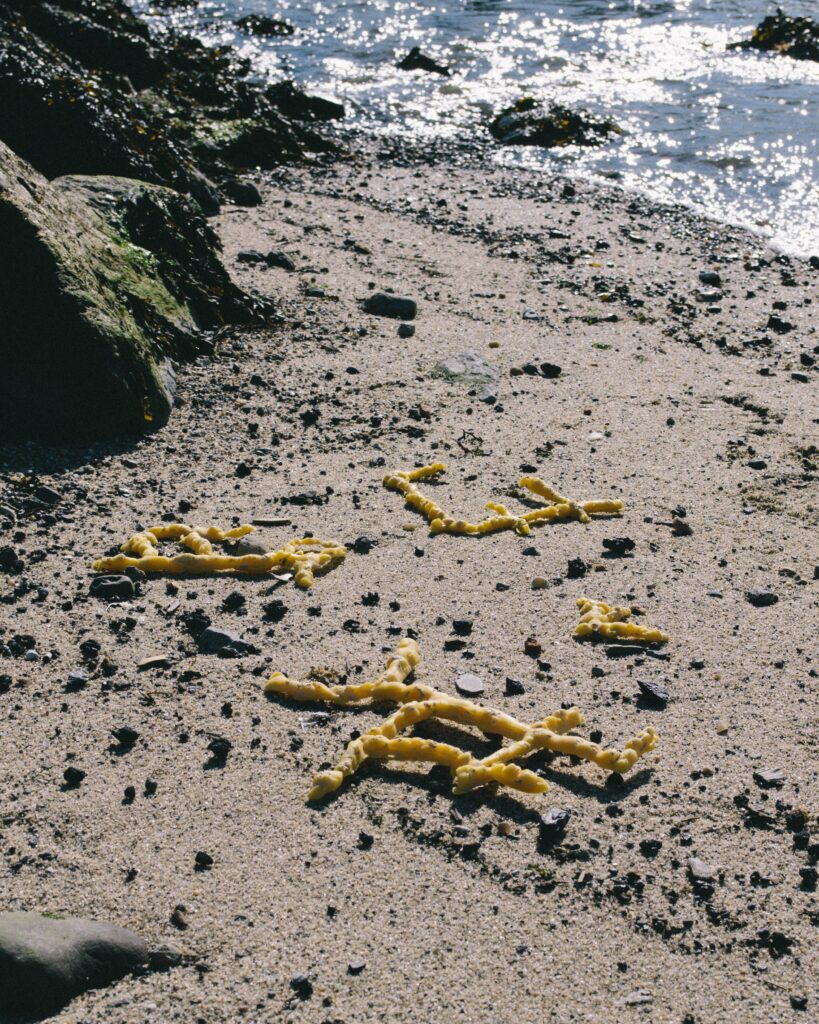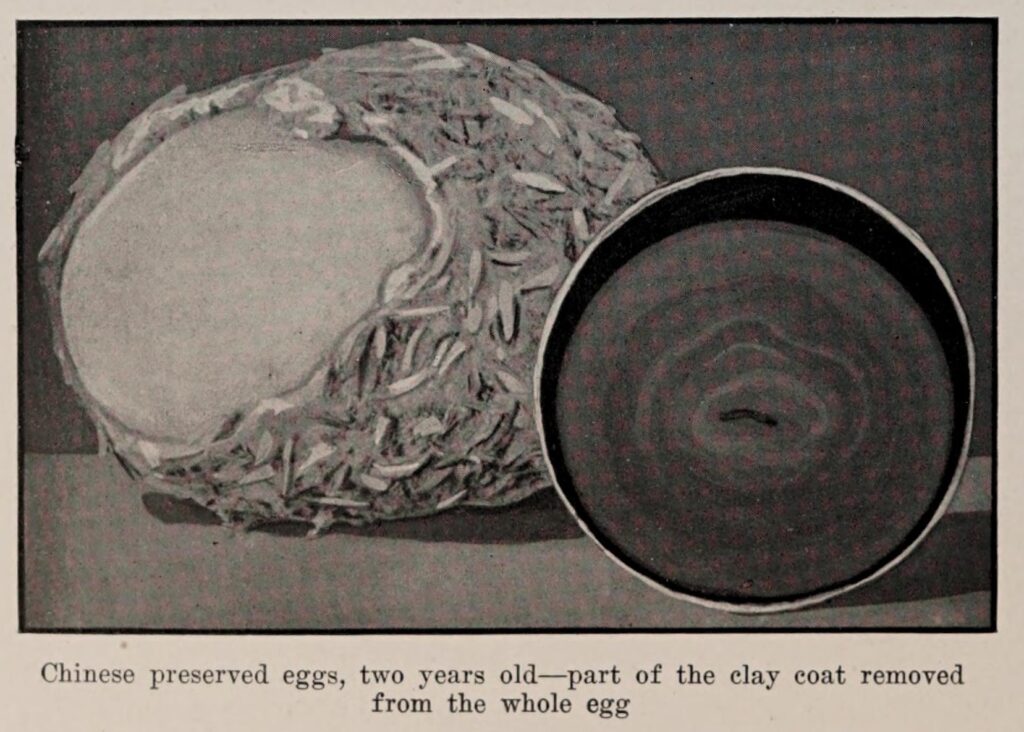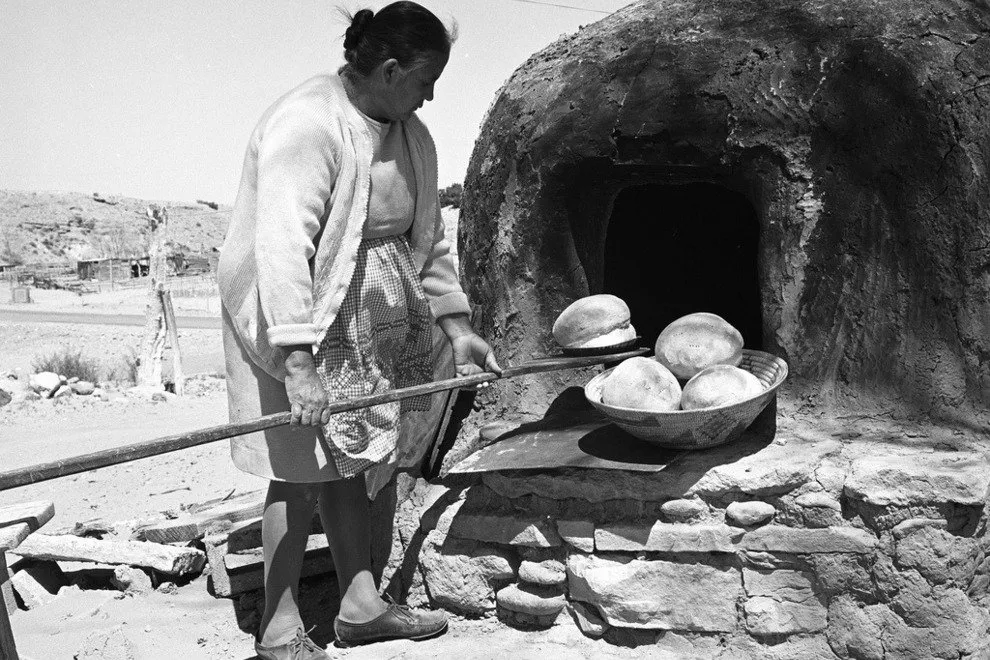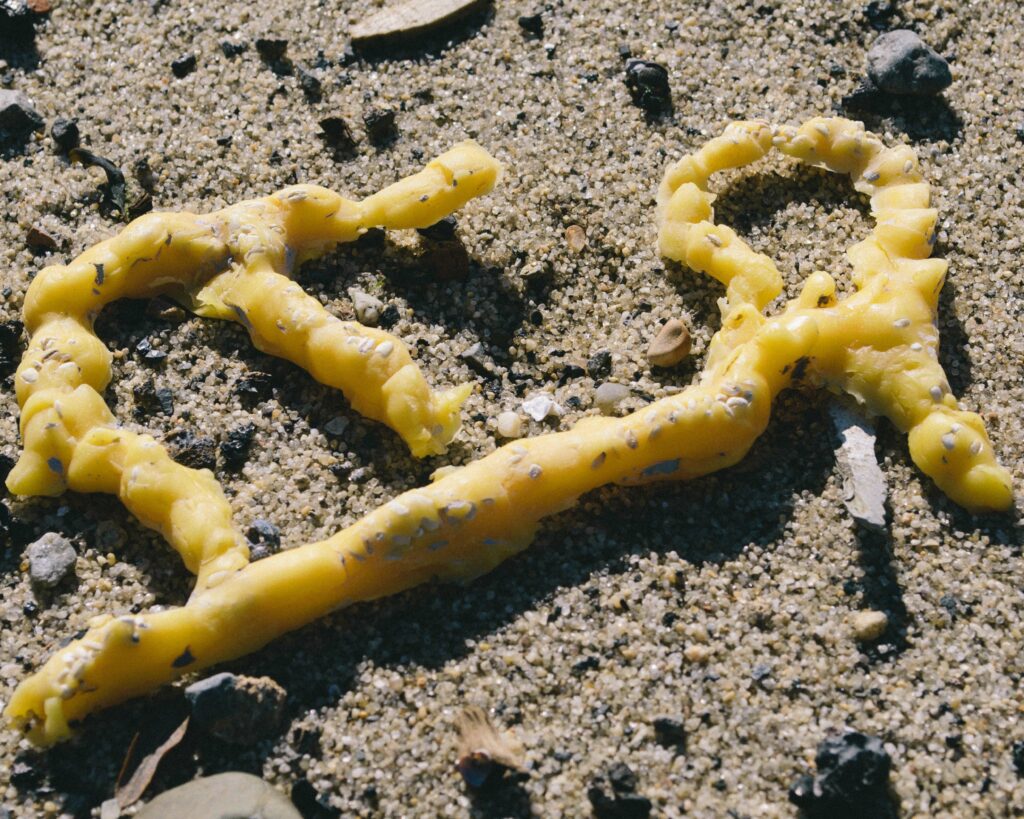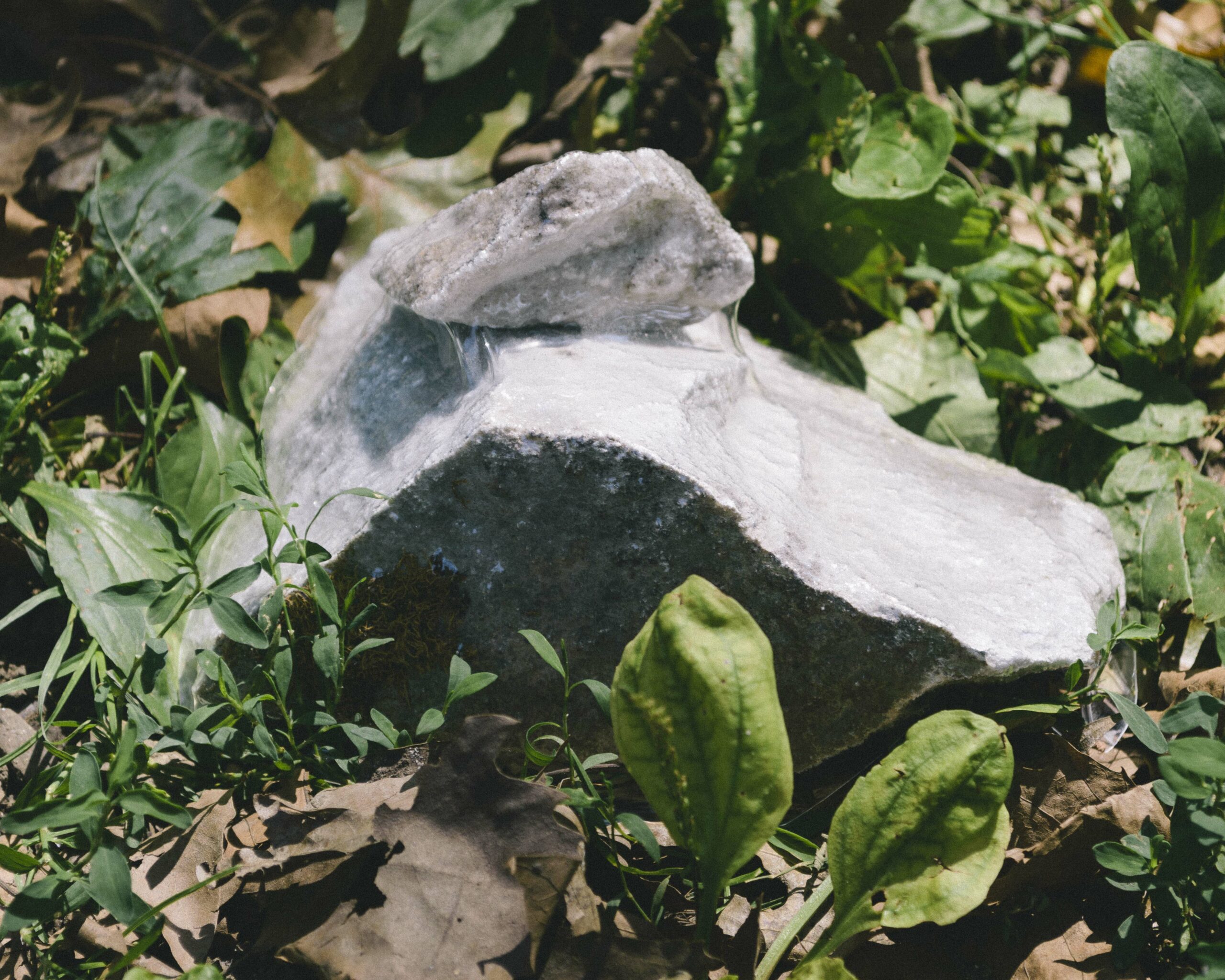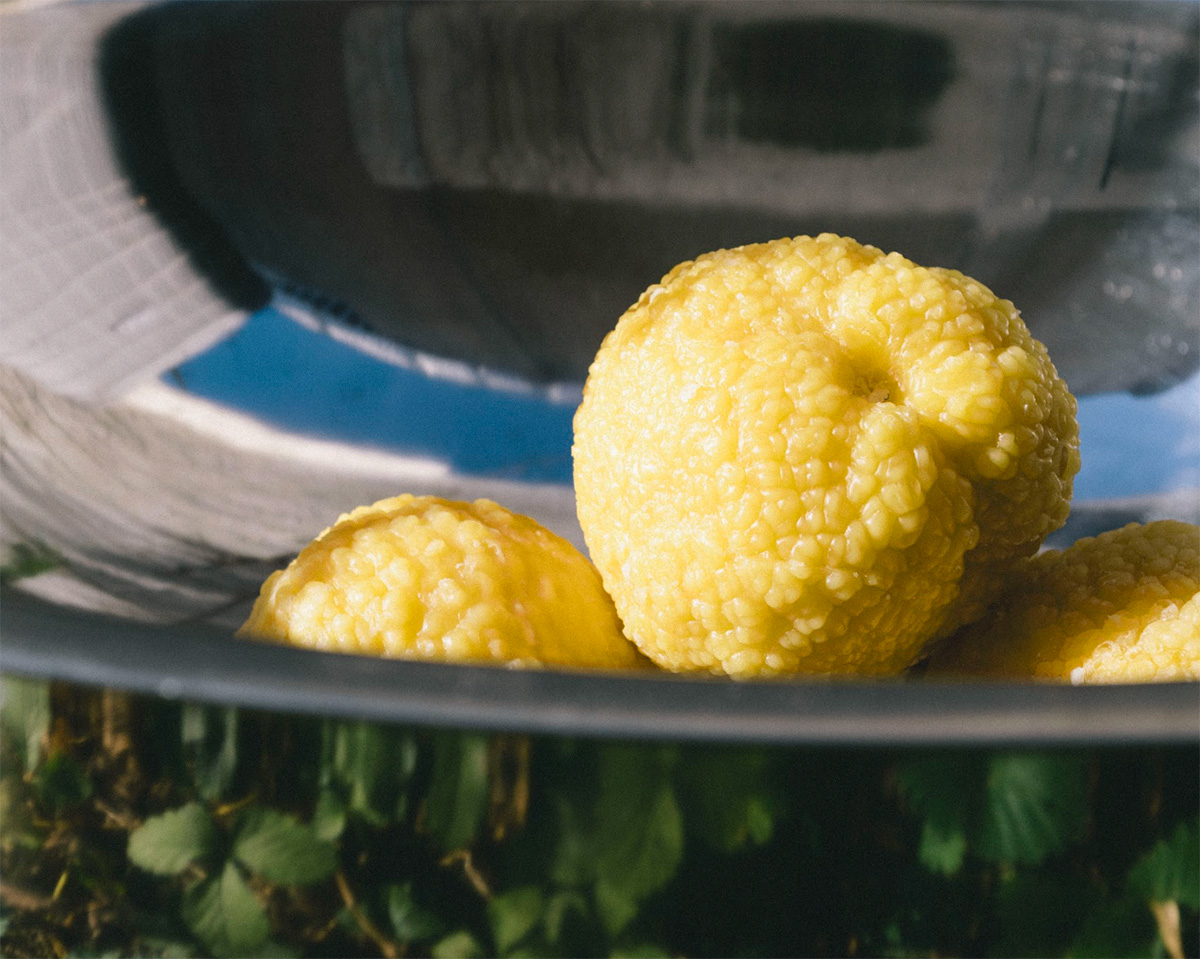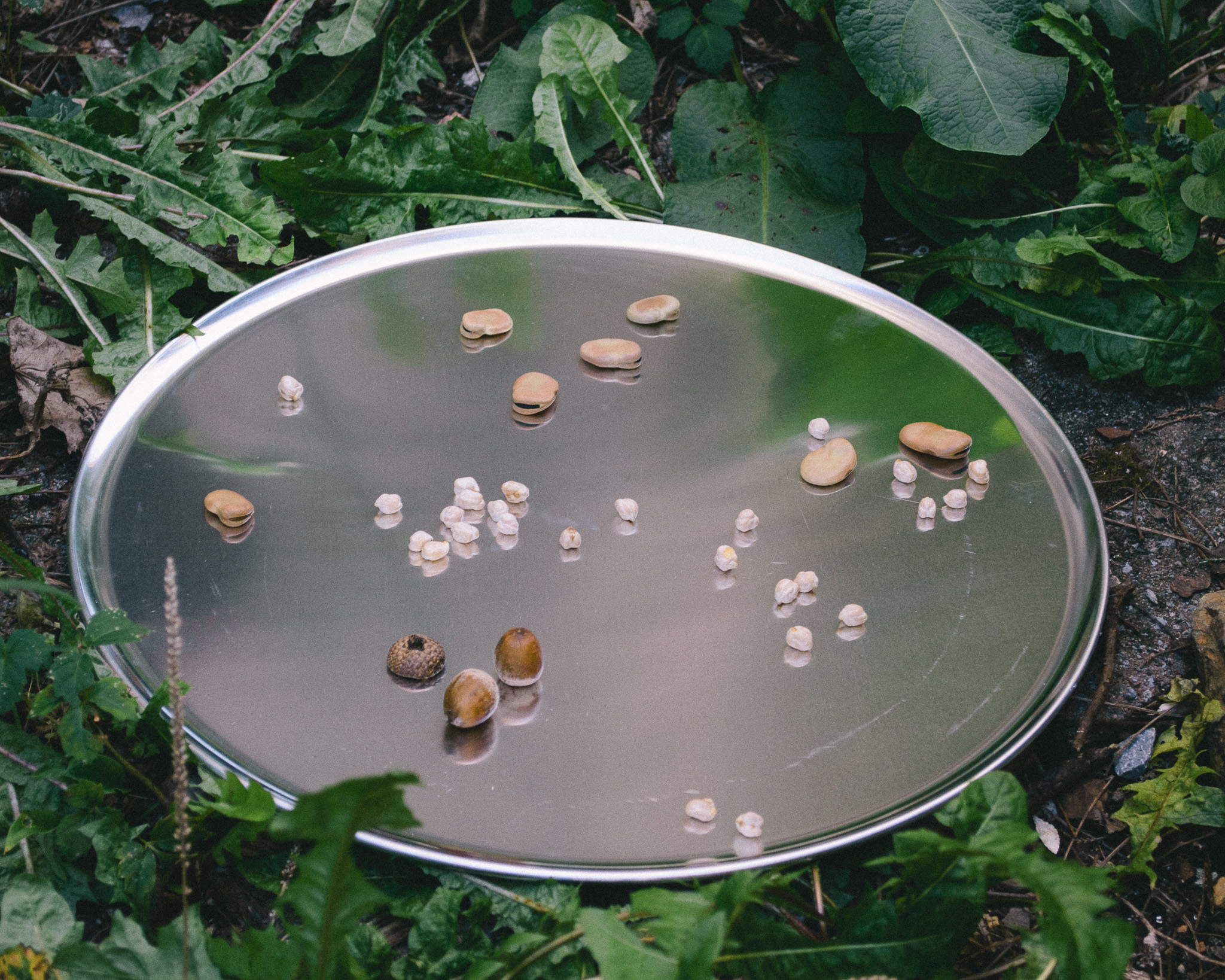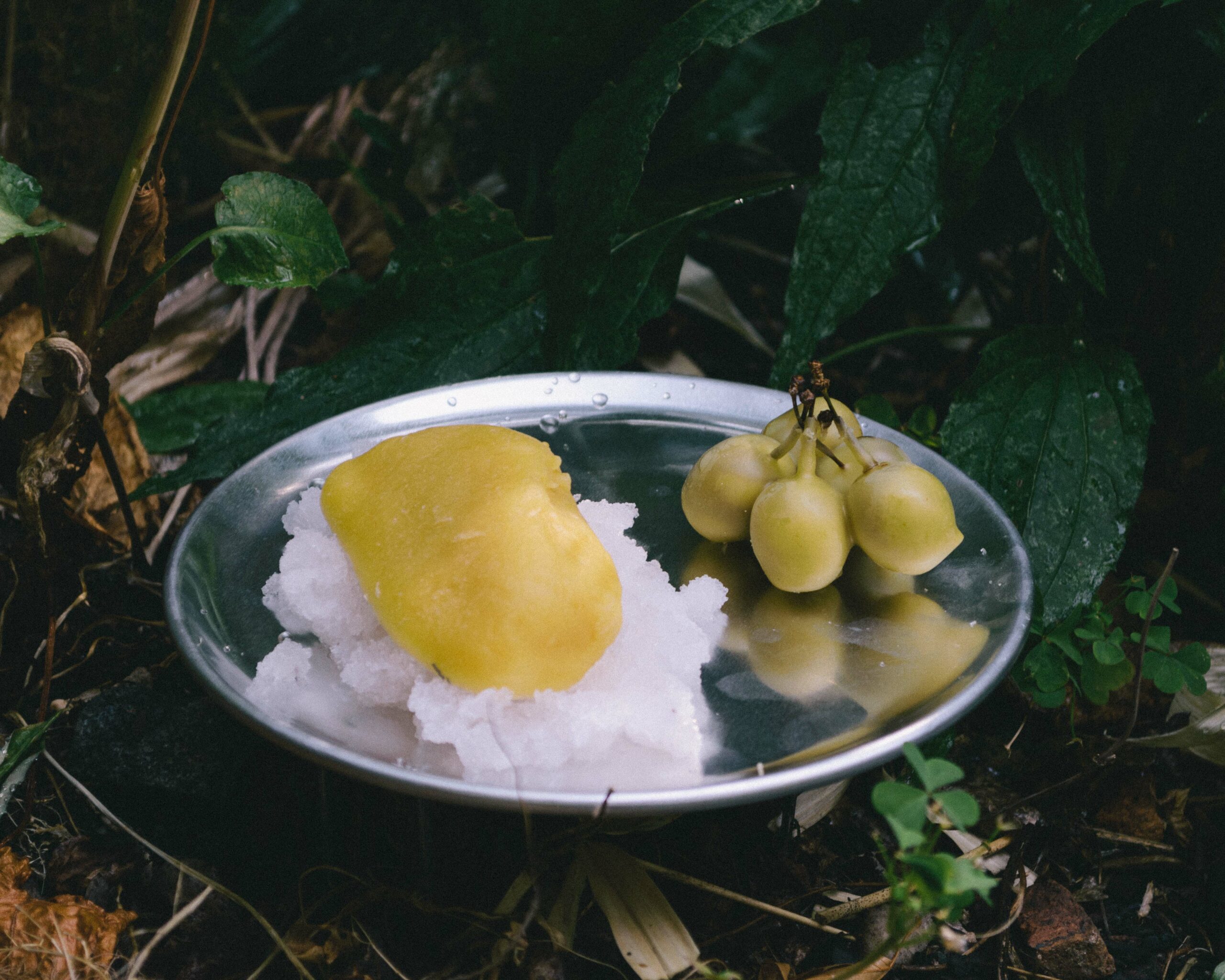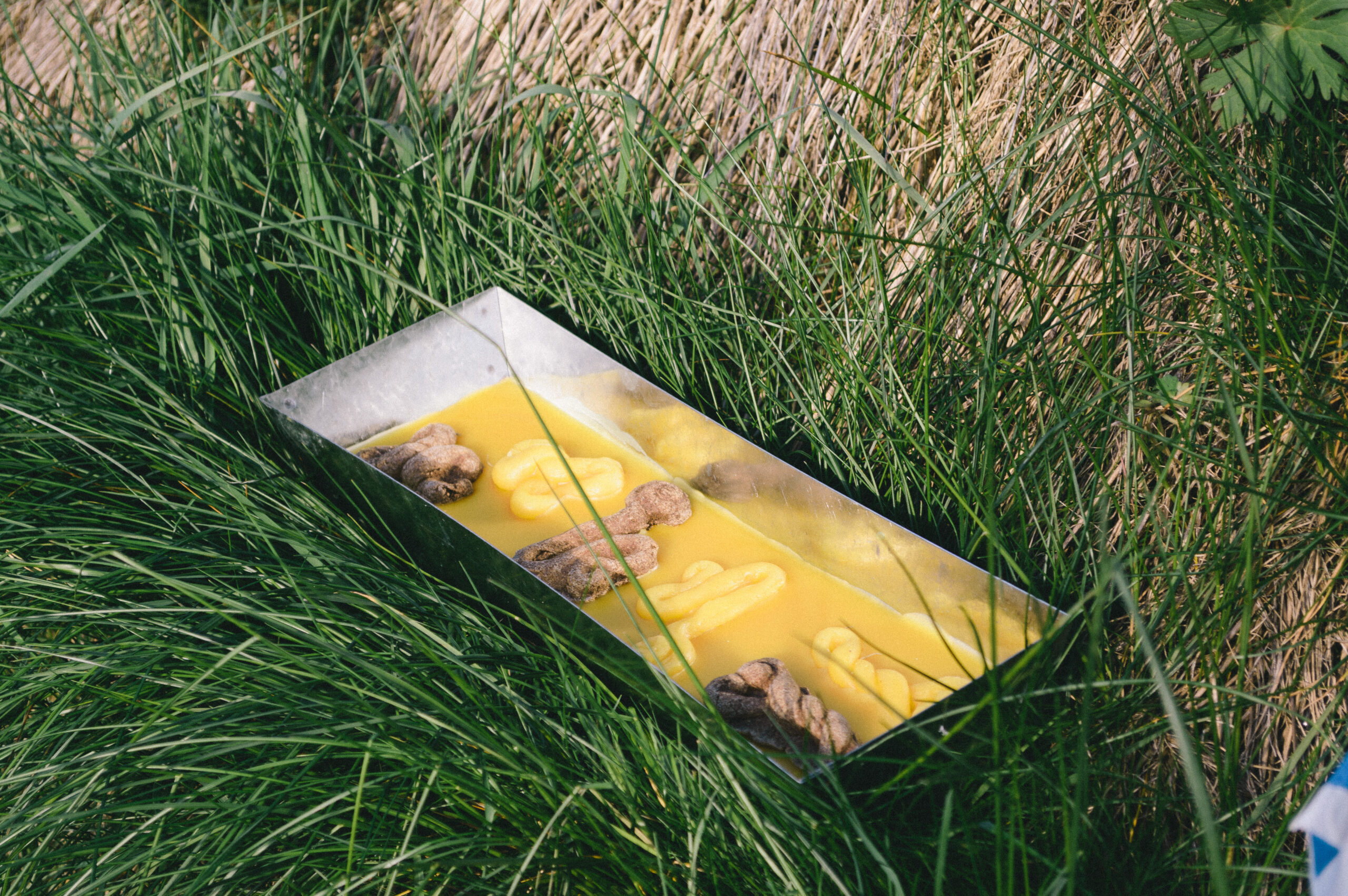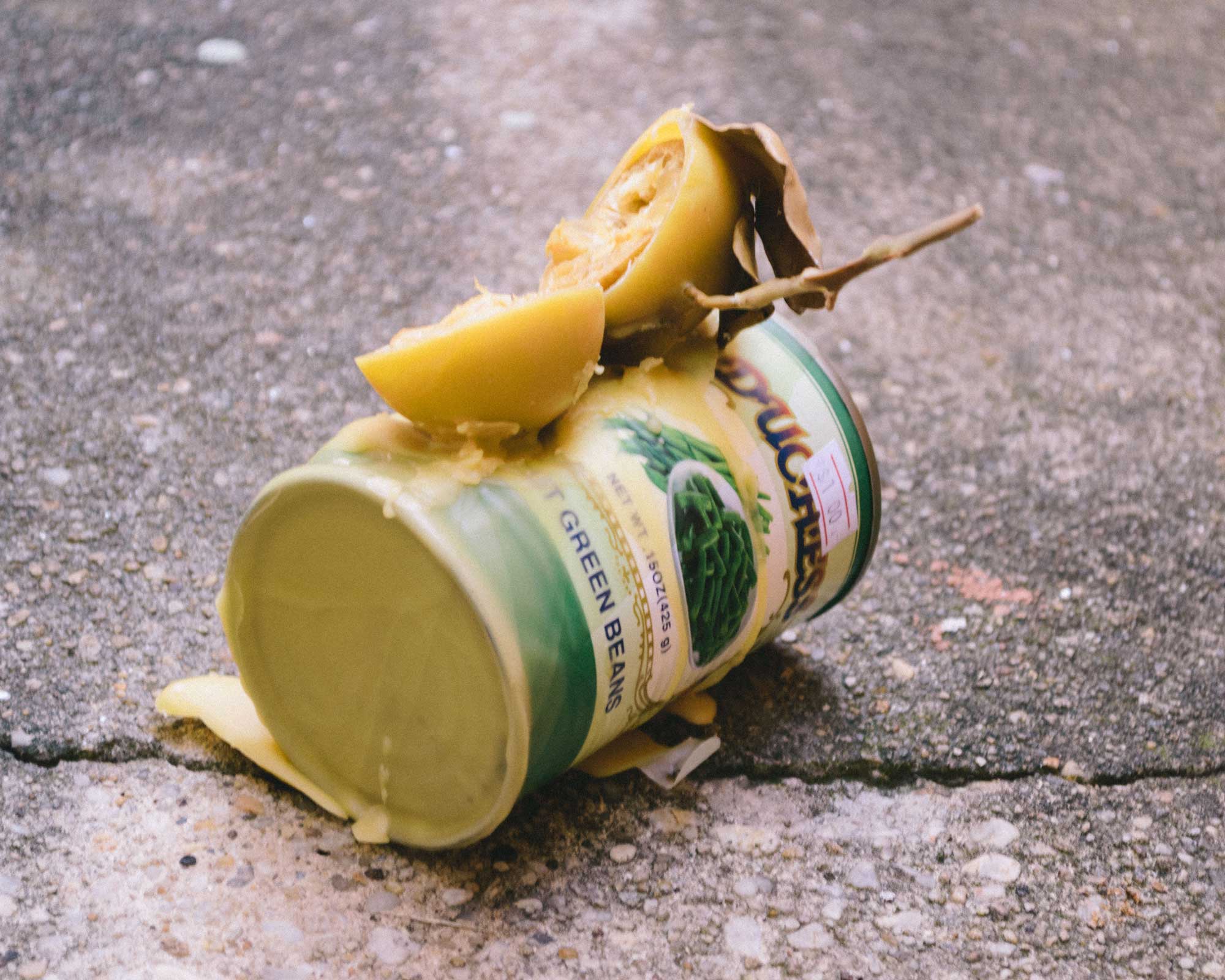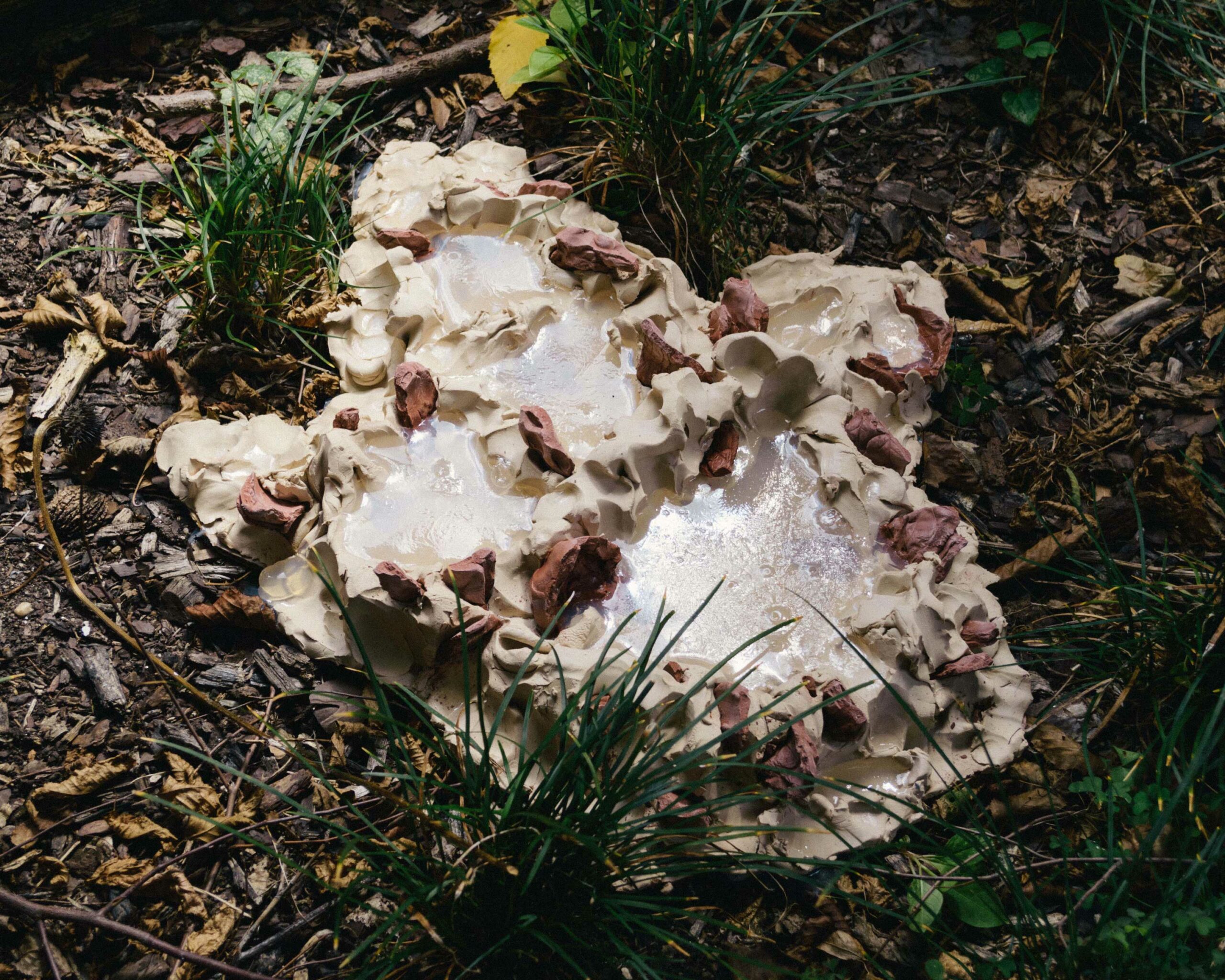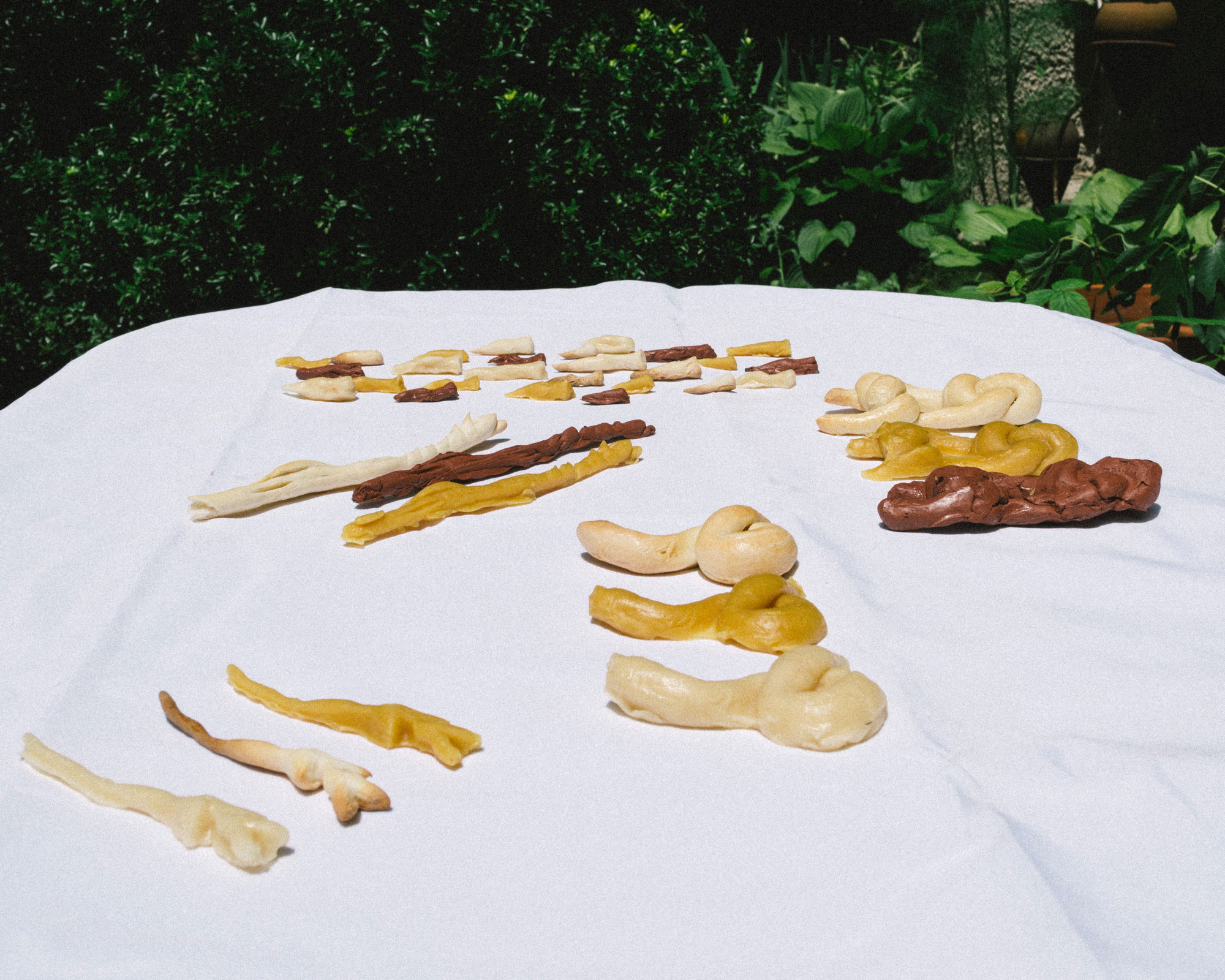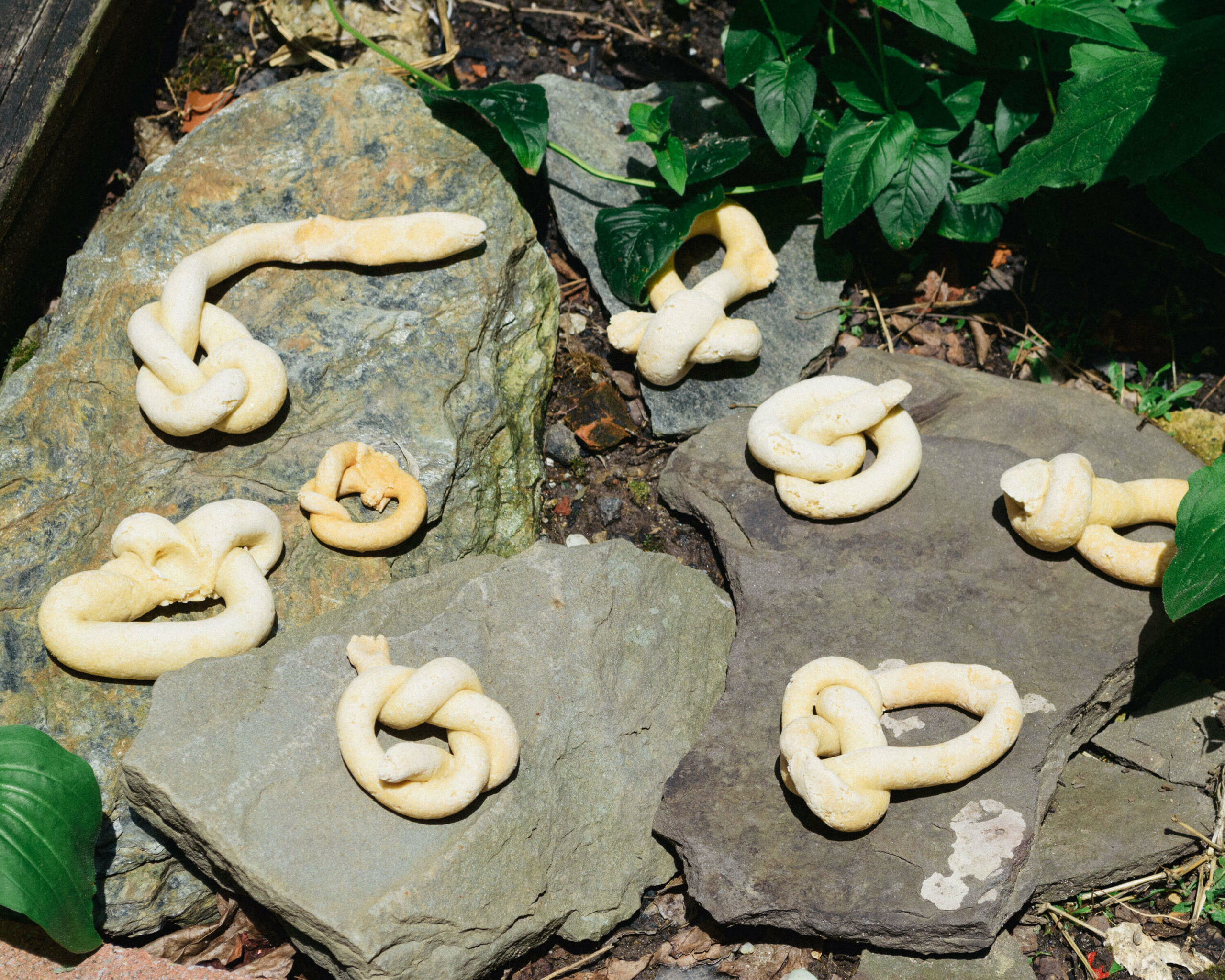Around 331 BC Alexander the Great set out to delineate land for the creation of the city of Alexandria. As described by Plutarch, he chose the island of Pharos following a vivid dream of Homer, and set out to demarcate and plan the city’s border and streets with his architect Dinocrates. With no chalk available, they traced the layout of the city and its thoroughfares with lines of barley flour. After completing the plans, birds from the surrounding wetlands and sky swooped in, eating the barley flour and effectively erasing the plans. Initially taken as a bad omen by Alexander, his on-staff seer assured him that the event indicated that the city-to-be was flush with natural resources (the barley) and that people (the birds) from all over would flock to the rich and prosperous city. The appeal of this tale lies not in the consequential appearance of Homer in Alexander’s dream, but rather the use of the barley as a medium to articulate the city. The city plan’s erasure and consumption by endemic wildlife is a potent image, one that efficiently and poetically condenses the fragile act of world building and captures the innate tensions within terraforming before the term’s genesis.
Terraforming in simple terms refers to human activities to transform environments in order to sustain human life. Originally coined by Jack Williamson (writing as Will Stewart) in his 1942 sci-fi short story Collision Orbit, the term grew from popular conceptions of xenoforming (that is, aliens altering the earth). In the years since its introduction, public conception of the word has evolved to encompass two interrelated understandings. The first being the original science fiction premise of reproducing earthly environs outside of earth’s atmosphere. The second returns the term to the earth’s surface, and is used to describe terraformation activities that have already or are currently taking place to make earth habitable for humans. In both, it is near impossible to exorcize the specter of control and domination in terraforming as it presupposes a stark division between humans and so-called nature, Us and Them.
Originating alongside terms like planetary engineering or ecosynthesis, terraforming has developed a particular cultural stickiness (anthropocene and late-capitalism are also in this club). It has become much loved in academic architecture and design circles for its speculative slant and visually rich connotations without the explicit pressure to produce a viable outcome – ‘The technology just hasn’t caught up’! The mouthfeel of the word is also particularly satisfying with the double R and gestures at a slew of etymological cousins like terrain, terroir, territory, and so on.
What if the mouthfeel of the word is indicative of an inclination to understand the earth through taste or assimilation? A more direct consumption that embodies all the ethical complications of terraforming but also brings it home in a way that speculative conferences or literature cannot. Perhaps there is an edible terraformation. Terraforming in the form of buried food, foods cooked underground, cooking in earth materials, and of course agriculture.
Buried foods are among the easiest to consider as terraforming, and on a satisfyingly intimate scale (i.e. portioned for one or a few people). There are a few different modes by which buried foods are developed in relation to locations and qualities within the earth itself. Temperature is the most important condition, but other aspects such as acidity also factor in. Buried foods include Greenland and Iceland’s buried shark or hákarl which begins with gutting and beheading a shark and burying it in gravelly sand. Stones are then placed on top to press out the fluids and the shark is left to ferment before excavating and drying. Kimchi and various krauts are also often buried for temperature regulation. As are wines stored in underground amphora or qvevri. Enset, also known as false banana, is a plant in Ethiopia which is fermented underground to become kocho/qocho which alongside injera constitutes as the starchy staples of local diets. This particular plant cannot reproduce on its own so agricultural structures and systems are put in place to support it (a more traditional type of terraforming).
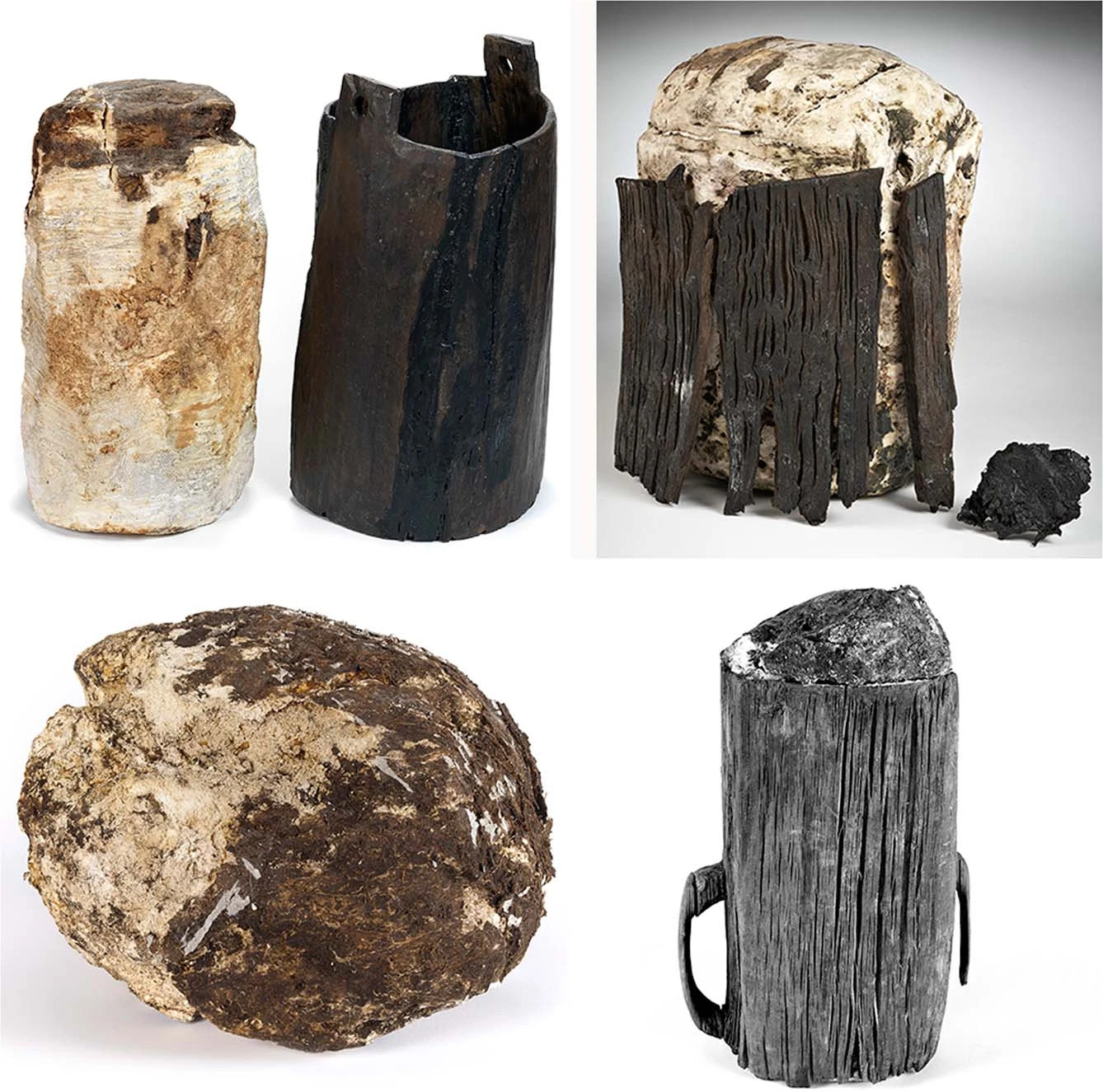
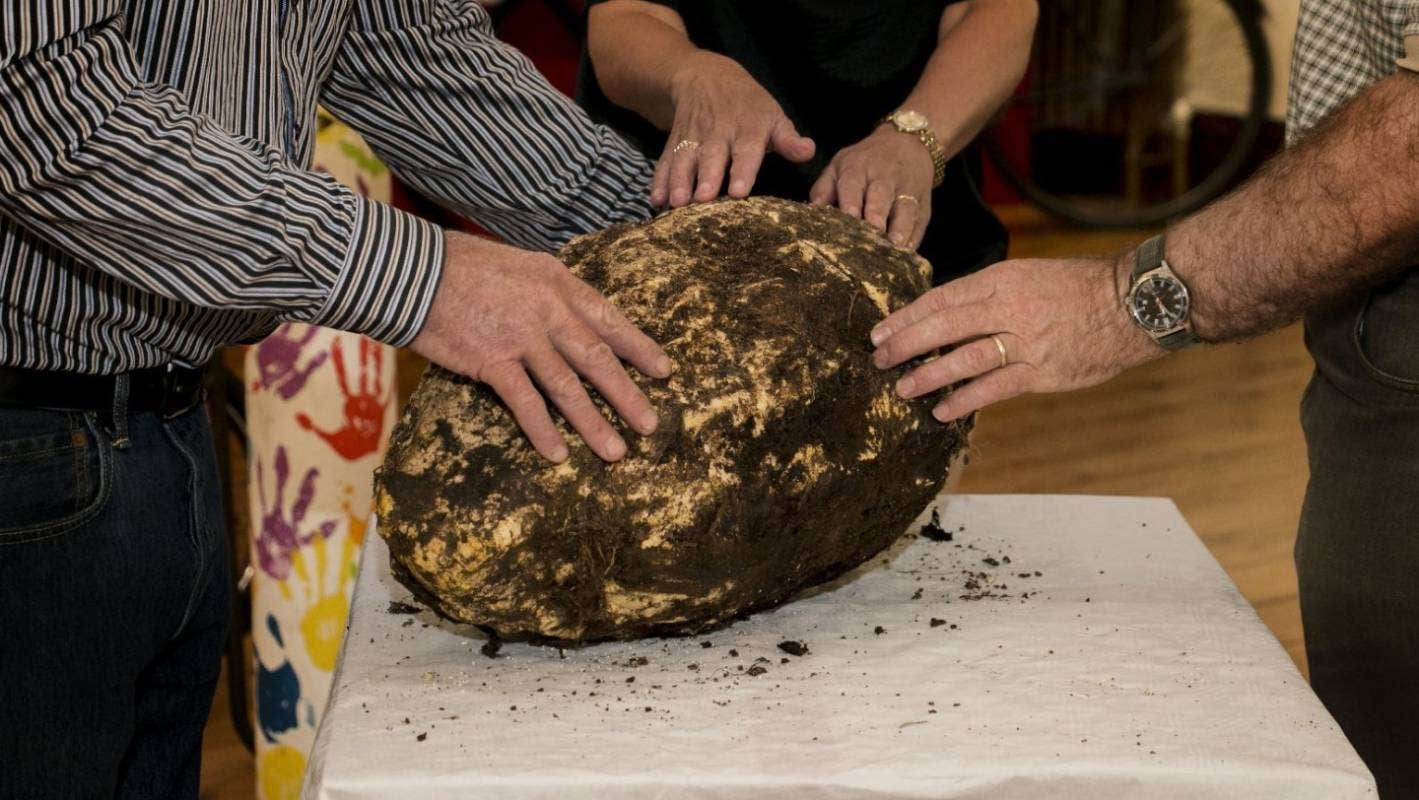
Possibly one of the lesser understood examples of subterranean foods is bog butter. Bog butter, massive hunks of butter found preserved in Irish peat bogs, is composed almost completely of fat (95-99%) it is quite different from contemporary, common butter. The reasons for the burying of the butter has likely changed over time as well, beginning with their use as votive offerings in the Iron Age, likely as a kind of storage for winter/mitigation of food scarcity, potentially as security for rents, or even in pursuit of a particular kind of flavor development sometimes described as garlicky and a bit rancid. Orchestrated decomposition or attempts to stall it exist quite explicitly here.1 Peat bogs are particularly suited to preservation— they’re cool, anaerobic, and highly acidic. Butter isn’t the only thing that fares well in bogs, dead bodies excavated from bogs often are so well-preserved as to look recently deceased. In turn, North Africa has its own buried butter — smen —which, rather than seeking acidity, seeks the cool temperatures of the subterranean to culture over a long period of time. The butter itself is accompanied with an unconfirmed legend, and is said to have been used in the Berber ritual of burying a clay vessel of smen on the date of a daughter’s birth, only to be uncovered on her wedding day. It then emerges with a lactic blue cheese sort of aroma after its long and slow fermentation.
- 1. See: Cooking for the end of the world
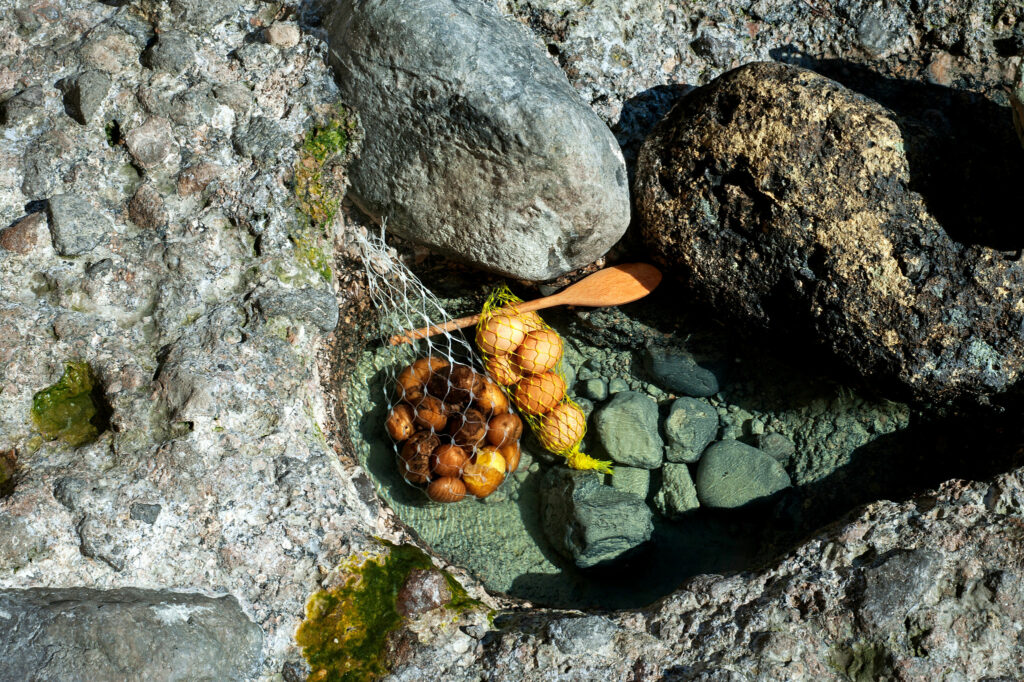
There are a range of cooking traditions that take advantage of hot temperatures underground, either naturally occurring or introduced through fire. In most examples, the heat source is of primary importance and little interest is paid to the flavor imparted by the earth itself. Dense, brown Icelandic baked breads for instance are baked in pots in geothermally heated beach sands for up to 12 hours. On the Italian island of Ischia, another zone known for its volcanic hot spring, hot sand, that can get up to 350 degrees, is used to cook seafood, eggs, and potatoes. Pit ovens are common across the Americas in various indigenous traditions, the New England clambake for example which is originally attributed to the indigenous tribes on the East Coast. Taguella, a product of a nomadic lifestyle rather than the outcome of naturally occurring hot spots, is a dry sand-baked flatbread originating from Northern Africa where flatbread is laid atop coals and sand and covered with the remaining coals and sand until cooked. A variation on this approach, Naan Sangak is a Persian flatbread baked with rocks/pebbles, a technique so popular that contemporary bakeries have rigged ovens with pebbles to replicate the effect.
Beyond bread, Chinese century eggs get their green-gray yolks and rich brown whites from being buried in a pH-altering mixture that can include ash, clay, salt, and even rice hulls. The observation of the effect of certain clays or soils on eggs has many legends associated with its origin. One such story involves a young duck farmer in Hunan who rediscovers the spurned eggs he had left as a courting gift in a woman’s garden half a month after, when cleaning out the ash pit, which had transformed the consistency of the egg with its alkaline mixture.
Then of course, we have cave-based preservation to thank for a great number of cheeses and cured meats. Caves with particular temperature regulation from their depth and select breezes combine with naturally occurring organisms that provide flavor and transformative activities to various ingredients. Cave environments are reproduced in factory settings and even in domestic refrigerators. The interesting thing here is to note the gestural difference between finding a cave and digging a hole.
The further one gets in listing foods buried, preserved, or transformed underground, the more apparent it becomes that these methods can be considered modes of containing: a hole becomes an oven and a cave becomes a refrigerator. With the incorporation of earth-based architectural materials the distinction between a hole in the ground and an oven becomes murkier. Clay, cob, and stone ovens create a bridge between natural and built environments, creating food architecture that derives from the more direct methods of using earth discussed earlier. Native American hornos are among the most iconic examples of these structures, constructed of foraged mud and clay. Clay vessels (and metal vessels which also derive from earth extractive processes) miniaturize these architectures in some cases, and in others act as a new membrane for that which is being transformed inside of it. A soup spilled on the ground is not the same as a soup in a pot – arguably it can’t become soup until it is combined in the pot. As Santa Fe earth architect and trained archaeologist Edward Crocker puts it, “all other building materials on the planet are alternatives to earth.”2
- 2. Ed Crocker, Strawbale, An OK Second Choice.
If we consider earth as material in which we prepare food, then agriculture becomes the most expansive sphere in which food is prepared. Mounds of manure and compost cook in their own right (not to mention actual compost-heated ovens), even if they are more than a few degrees away from food on a plate. Agriculture is the sphere where terraforming is most commonly considered. Earth is moved, built up, carved out, added to, and extracted from in service to the growth of plant and animal life destined for human consumption. Personal gardens and monoculture fields both operate from the perspective of assuming that earth is moveable, infinitely transferable through tilling, purchasing bags from big box stores, or creating more biomass with no-dig methods. Labor comes into view here as the reality of implementation of any substantial act of terraforming gesture requires significant effort and allocation of labor.
Agriculture plays an influential role in shaping our collective conceptions of life beyond Earth as well. Strategies for extraterrestrial terraformation, fiction or not, often fixate on the reproduction of atmosphere, that is, it operates under the assumption that the absence of the correct balances of oxygen and carbon dioxide pose the main obstacle to successful extraterrestrial agriculture. Here, agriculture is not only an essential tool for survival and nourishment, but also a continuation and establishment of the systems of capital accumulation that have come to define the relationship between humans and “nature”. Marx describes the preparation of natural material by humans and non-humans for subsistence activities as a kind of digestion or pre-ferment. In this way, the difference between man and nature becomes a difference of perspective: “Nature is man’s inorganic body–nature, that is, insofar as it is not itself human body. Man lives on nature–means that nature is his body, with which he must remain in continuous interchange if he is not to die. That man’s physical and spiritual life is linked to nature means simply that nature is linked to itself, for man is a part of nature.”3
Capitalist terraforming occurs in the relentless search for new markets – for new kinds of surplus value to accumulate and the creation of new needs and new consumers. It also aggressively terraforms and extracts from regions, usually in the global south, in service of surplus production for others. The terraforming itself becomes an industry and apparatus to maintain through additional extraction. Extraction without actual input or material investment as capitalism thrives off of perpetuation of debt and material and capital owed. As long as labor continues in support of this accelerating and compounding cycle, terraforming practices will only be extractive and will continue to be powered with the energy produced in the moment of severing or alienating from so-called nature.
- 3. Karl Marx, Estranged Labor
To productively situate terraforming, that is to practice it with its full life-giving and relational potential, necessitates a rigorous understanding of labor outside of capitalism. Terraforming names a particular relationship with and transformation of earth that creates opportunity for a complicated and multi-temporal relations with earth as a body that will outlast any of us. The editors of Praise for Arts of Living on a Damaged Planet consider it as a kind of haunting that comes with (or after) these large-scale landscape altering activities: “Anthropogenic landscapes are also haunted by imagined futures. We are willing to turn things into rubble, destroy atmospheres, sell out companion species in exchange for dreamworlds of progress.”4 It becomes interesting to consider whether terraforming ‘sustainably’ is moving around existing material rather than the spontaneous generation of new material – a circular system in direct opposition to an exponentially growing (i.e. capitalist) one that systematically ignores the inconvenient material dynamics at play in any act of terraformation. As Kohei Saito writes, “Capital cannot produce without nature, but it also wishes that nature would vanish.” (Kohei Saito, Marx in the Anthropocene: Towards the Idea of Degrowth Communism)
- 4. Praise for Arts of Living on a Damaged Planet, Editors Anna Tsing, Heather Swanson, Elaine Gan, Nils Bubandt
Assuming capitalism is antagonistic towards home (or non-commercial) cooking as it represents a loss of a consumer in most instances and shields labor from explicit value extraction, we might make a case for cooking as terraforming on a collective level but also on an individual, miniaturized level. What might terraforming in service of transformation or digestion rather than accumulation look like? The focus must certainly be on agriculture or atmosphere as primary terraforming spaces, but the edible, the cooked, and the fermented bridge the gap between earth and individual.
✺ Clay-Baked Vegetables ✺
A selection of root vegetables and onions
Clay
Preheat the oven to 350 degrees fahrenheit while you prepare the vegetables. Give the vegetables a quick scrub and cover in the clay (be sure not to use airdry clay, the real stuff can be ordered online from clay supply shops or sometimes found in your backyard). This can be done in a few ways, the simplest is to roll out a disc of clay about ¼ of an inch thick and to place the vegetable in it, pulling the sides up around it. Alternatively, take small thumbprints of clay and adhere them one by one to form a spiny skin on the vegetable. Add limbs or appendages to the structures, conjoin clay forms or even form a giant one. Lay out on a lined baking sheet and allow to bake until the vegetables inside are tender (between 45 minutes and an hour). Remove from the oven and break the shells open with a hammer or a rolling pin or tear them apart with your hands. Serve with olive oil and salt or a sauce of your choosing.
